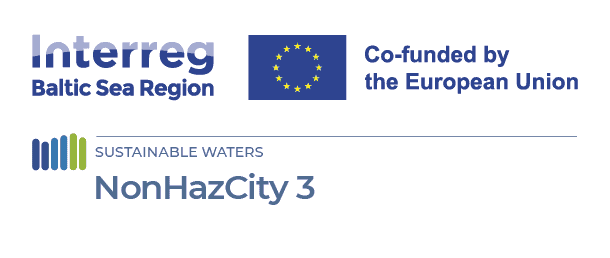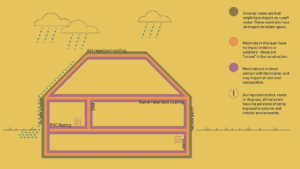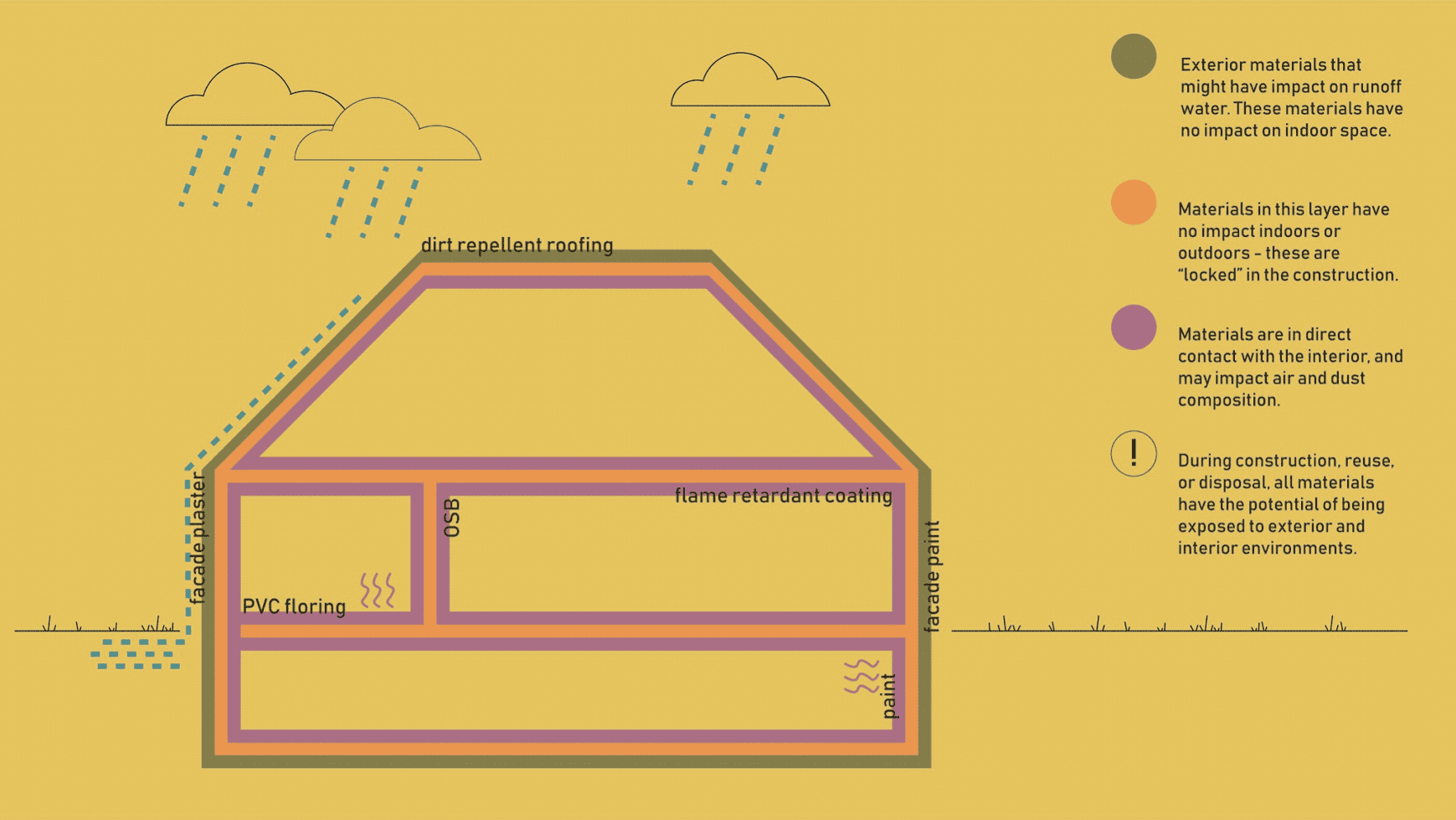
NonHazCity 3: Paving the Way for Sustainable Construction with Reduced Hazardous Substances
28 August 2023
The NonHazCity 3 project, a collaborative effort involving experts, municipalities, and institutions from the Baltic Sea Region, aims to address these issues by focusing on reducing hazardous substances in construction materials. By implementing pilot projects and developing strategies for a climate-neutral, recyclable, and toxicologically safe construction industry, NonHazCity 3 strives to bring about a holistic transformation in building practices. This article explores the critical issue of hazardous substances in buildings and highlights the endeavours of NonHazCity 3 in creating a more sustainable future.
Hazardous Substances in Buildings have Severe Impacts
Within the construction sector, the presence of hazardous substances poses a significant threat to both human health and the environment. These substances are commonly used in construction materials for various purposes. For example, biocides are employed in plaster and facade paints to prevent the growth of algae and fungi. Flame retardants are used to enhance the fire resistance of building materials, while heavy metals are incorporated into products such as paints and coatings for their performance properties. Plasticizers are added to materials like PVC to improve flexibility and durability. Perfluoroalkyl and polyfluoroalkyl substances (PFAS) are used for their water and dirt repellent properties on roofing and facades. Due to their large surfaces the use of these forever chemicals in building products is concerning – www.umweltbundesamt.de/publikationen/potential-svhcs-in-environment-products.

The illustration demonstrates some of the common chemical hotspots in buildings and the levels of affection that should be considered when planning a building, renovation, demolition or reuse. Illustration by NOMAD architects. (see the full illustration below by clicking then on it)
Many chemical additives are known to be emitted from building products into soils, bodies of water, and indoor air. These emissions contribute to severe health issues such as respiratory problems, allergies, and even chronic diseases as well as environmental deterioration. Rain can wash out chemicals from roofs and facades, accumulating in soils and bodies of water, ultimately negatively impacting plant and animal tissue. Only 38 % (www.eea.europa.eu/publications/state-of-water) of monitored lakes, rivers and other bodies of surface water are in good chemical status – with concentrations of pollutants that do not exceed the EU’s environmental quality standards. In urban areas the pollutant loads from buildings contribute significantly to the weakening of environmental quality – www.mdpi.com/2073-4441/14/3/303.

An AI generated illustration in Midjourney V 5.2 about the facade finish chemical substance rundown in groundwater. Prompt by NOMAD architects.
Another problem posed by hazardous substances is the difficulty in effectively separating, recovering and reusing valuable materials as would be necessary for climate-friendly and resource-conserving practices. Hazardous substances released during the recycling process cause a risk to workers involved and may contaminate the recyclate. As a result, the use of hazardous chemicals in construction materials is one of the major obstacles in establishing a circular construction industry. To achieve a truly circular economy in the construction sector, it is crucial to minimise the presence of hazardous substances and prioritise the use of non-toxic, recyclable materials.
NonHazCity 3: Advancing Sustainable Construction
NonHazCity 3 represents an innovative project that focuses on minimising hazardous substances in buildings, building sites, and construction materials. By developing practical solutions and implementing pilot projects, NonHazCity 3 aims to establish protocols for eliminating hazardous substances from our homes, workplaces, and the environment, with a specific emphasis on the Baltic Sea region. This project engages municipalities, private entrepreneurs, and residents, equipping them with the knowledge and motivation needed to make informed decisions during construction, renovation, or building material selection. By promoting a holistic perspective on sustainable buildings, NonHazCity 3 seeks to improve health, preserve the environment, and enhance the economy.
NonHazCity 3 offers a comprehensive approach to tackle hazardous substances in the construction industry. The project focuses on multiple aspects, including:
⦁ Development of a comprehensive catalogue: NonHazCity 3 aims to create a catalogue that assesses building materials based on criteria that incorporate chemical aspects. This database will provide valuable information to stakeholders, facilitating informed decision-making regarding material selection.
⦁ Introduction of chemical criteria for procurement: NonHazCity 3 advocates for the introduction of chemical criteria in public procurement of construction services and materials. Public entities are responsible for a significant portion of the financial volume of constructions in Europe. By considering the chemical composition of products in public procurement, the project aims to promote the use of less hazardous alternatives and drive the market towards safer construction practices.
⦁ Enhancement of information flow and market dialogue: NonHazCity 3 emphasises the importance of improving information flow along the supply chain and fostering dialogue among stakeholders. By enhancing communication, the project aims to facilitate the adoption of sustainable practices and the use of non-hazardous materials. This includes encouraging collaboration between suppliers, manufacturers, contractors, and end-users to ensure a shared understanding of the benefits and availability of safer construction materials.
⦁ Information material and awareness campaigns: NonHazCity 3 designs information campaigns and informative materials targeting both do-it-yourselfers and professionals in the construction industry. These initiatives aim to raise awareness about the hazards of certain substances and promote the adoption of sustainable alternatives. By providing clear and accessible information, NonHazCity 3 empowers individuals to make informed choices that prioritise their health and the environment.
Conclusion
NonHazCity 3 stands at the forefront of efforts to foster a more sustainable construction industry by tackling the issue of hazardous substances in buildings head-on. Through its implementation of pilot projects and dissemination of practical tools and guidelines, NonHazCity 3 aims to create a future where buildings are climate-neutral, recyclable, and toxicologically safe. By inspiring stakeholders across Europe to adopt sustainable building practices, NonHazCity 3 plays a pivotal role in safeguarding the health of present and future generations while promoting a more sustainable and resilient construction sector.
Authors: Outi Ilvonen (German Environment Agency), Mechthild (Mecki) Naschke (World Future Council), Lucas Schmitz (BEF Germany), Jenny Fäldt (City of Stockholm). Images from: Marija Katrina Dambe (NOMAD architects)






